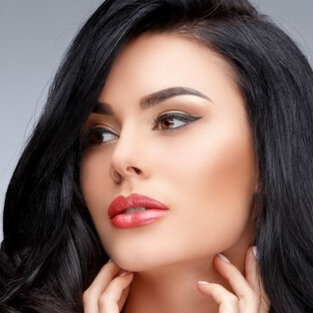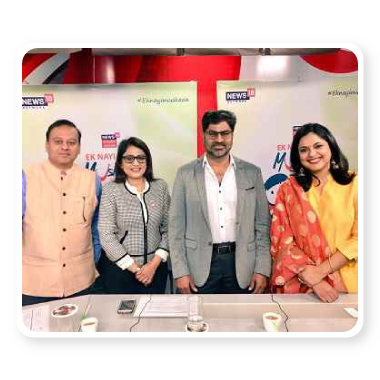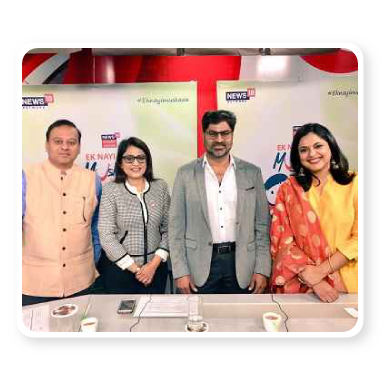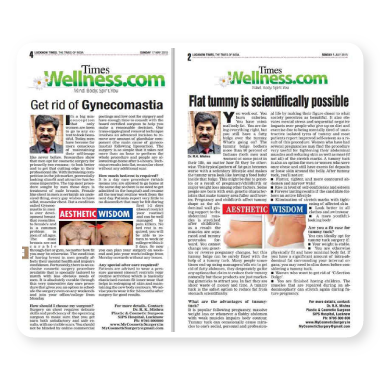Copyrights © 2022. All Right reserved by MyCosmeticSurgery
Scars are the result of skin repair following wounds, which may be related to accidents, burns, disease or surgery. The more the skin is damaged, the longer it will take to heal and the greater will be the risk of a noticeable scar. Scars appear red and thick initially, and then gradually fade. Scars that seem unsightly at three months may heal nicely by six months or one year. But one thing should be clearly noted that once the scar developed from full thickness damage to the skin, it could never be removed completely. The only possibility after a good management is to make it almost invisible or very thin & less visible, so that it can fade with surrounding skin crease or geometry of face.
There are many types of scars, many locations for scars and many causes for scars. Each scar has to be individually evaluated when treatment is being planned. The length of time scar has been present, the location of the scar, the appearance and whether it is causing irritation determine the treatment plan for individual scars.
“The wound or broken skin results in best appearance when repaired on 1st day by an expert plastic surgeon; The result may be almost invisible scar.”

ACNE scarring is the result of abnormal healing of the skin as a result of ACNE. This is the most common scar problem that presents to our practice in young population. The scars often cause the patient to be self-conscious and may impact on their self-esteem. The scars may be of different types from very deep to shallow. They may involve small or large areas of the face. The treatment depends on many factors and is highly individualized. Treatment of ACNE scars by Dermabrasion or Microdermabrasion will result in reduction in the number of visible scars, a reduction in the depth of the scars and a greater uniformity of colour of the affected area. A 50% improvement in appearance of the scars is considered to be a good result.
Not all raised scars are keloid scars. The features that make it a keloid scars are:
Keloid scars having familial tendency and are more common is dark skinned people. Keloid scars are very difficult to treat, if not impossible.
Not all raised scars are keloid scars. In most of the cases, the raised hypertrophic scars are due to ill management from the beginning, due to burn & contractures or excessive tension on suture line. This is more common in dark skinned person. These types of scars can be avoided by proper management of wound or burn from the beginning by an experienced plastic surgeon. Once developed, this type of scar can be managed to a great extent to make it less visible.
There is a wide range of treatments available for scars, but remember, THE BEST MANAGEMENT OF SCAR IS ITS PREVENTION BY INITIAL REPAIR OF WOUND ON THE VERY 1ST DAY OF WOUNDING BY AN EXPERT & EXPERIENCED PLASTIC SURGEON; THE RESULT MAY BE ALMOST INVISIBLE SCAR.
Surgery
Surgical scar revision can improve the appearance of scars to a great extent, however, no scar can ever be completely removed. Surgical scar revision results in a less obvious mark or hidden in crease. Each scar is different and each will require a different approach.
Silicone-containing products
Available as gels, creams and bandages through pharmacies. They are helpful in reducing scar thickness and pain.
Steroid Injections
Using a very fine needle, steroid is injected directly into the keloid or hypertrophic scar. Used with raised scars causing them to shrink and flatten.
Micro-dermabrasion or Full Dermabrasion
Dermabrasion is a method that uses an electrical machine to remove the top layers of the skin to give a more even and smooth contour to the surface of the skin. It can result in improvement of certain scars like ACNE Scar or scars due to childhood smallpox or chicken pox. However, it cannot get rid of the scar entirely.
Resurfacing lasers
Also referred to as peeling lasers, are an excellent method of improving acne scars and chicken pox scars. High-energy lasers are used to remove tissue, which is making the scars more visible. Patients can return to work usually within two weeks. The skin may remain pink for several weeks or months. This treatment is used in the treatment of wrinkles and sun-damaged skin. (Dark skin of Indian population is not very suitable for resurfacing laser, as they can lead to hyper pigmentation or dark discoloration of skin even after trivial exposure to sun rays or U.V. rays)
Non-resurfacing lasers
These lasers are very useful for reducing scar redness. They may flatten raised scars and can also improve itching and burning sensations. Acne scars can be improved with this type of therapy without any need for time off work.
Fillers
There are a number of these injectable materials that are particularly helpful with depressed scars. They are injected under scars to lift them up and decrease their appearance. Fillers are also used in the treatment of wrinkles.
Some specific techniques are used for the treatment of ACNE scarring are :
This technique is used in depressed ACNE scars. A needle is inserted under the scar to lift the scar up.
This technique can be used in all ACNE scars. Needles are used to break the superficial skin layers, to stimulate a healing reaction resulting in a smoother appearance.
Deep small ACNE scars can be removed by cutting them out. Stitches are left in place for one week.
Punch grafts are small pieces of normal skin used to replace scarred skin. Small knives called punches are used to remove the scars. The area is then filled in with a matching piece of unscarred skin, usually taken from the skin behind the ear. The “plugs” are taped into place for five to seven days. Laser resurfacing one month later to achieve the smoothest result can follow a Punch grafting.





What Our Patients Say
Sliding genioplasty by doctor R.K Mishra. I had a receding chin and was insecure about it my whole life. I researched about my issue over the internet and found that it could be fixed so I started consulting with several plastic surgeons online. I came across the website of Dr. R. K. Mishra and was impressed with the detailed information. I contacted him thorugh emaila and his reponses were always very quick, I really appreciate that I booked a date....
It was an adventure to me & hence, I want to share my experience: – Signing the consent made me nervous at first because having the surgery was my individual decision but Dr. Mishra’s staff explained every pros & cons and answered all my doubts related to the consent. Thanks for making me confident about this procedure, it was great help. -Whole procedure was an adventure, those lights of Operatio theatre and how I was being perpared....
I had gynocamastia correction and chose Dr Mishra due to his trans-nipple scarless technique. I thought about the surgery for a long time but was concerned people would notice scars which would be as humilating as just having the gyno. Dr Mishra delivered beyond what I expected. I have absolutely no marks whatsoever from the operation as he did liposuction from the armpits area on my request and got it done for literally 1/6 of the cost of having...
My Dear Doctor Mishra, During first month of my recovery from genioplasty (chin enhancement), I impatiently asked you to reverse the surgery as I didn’t like my swollen chin but you consoled me and counselled me to wait for two months atleast to subside the swelling and see the actual results. I thank God that I followed your advice! I now have healed completely, and i am sorry that I bothered you, didn’t trust you I thank you for making me beautiful.....
I would love to share my experience while I was at Lucknow! I had come down to India from Bangkok sometime in April 2014, for getting my Sex Reassignment Surgery (Male to Female). I had decided to get my surgery done in India and I came across SIPS online, and immediately felt an unexplained connection. I was so excited and had been communicating....
I didn’t get the chance to thank you enough after my cosmetic surgery and shake your hands once again for all the effort you have placed into this procedure trying to give me my life back and a new start So Thank you deeply thoroughly from the bottom of my heart! I was lucky to have such an understanding and patient doctor! I felt very relaxed on the day of my surgery, i am satisfied with the results. Thank you so much Dr. Mishra....
29, Shah Mina Road, Chowk, Lucknow
www.mycosmeticsurgery.in
+91 9795 800 800
[email protected]
Please note that the photos you upload should cover the involved area only, must be in good resolution and in different angles such as left, right, front and back / bottom as required, see the below example & upload.

Copyrights © 2022. All Right reserved by MyCosmeticSurgery